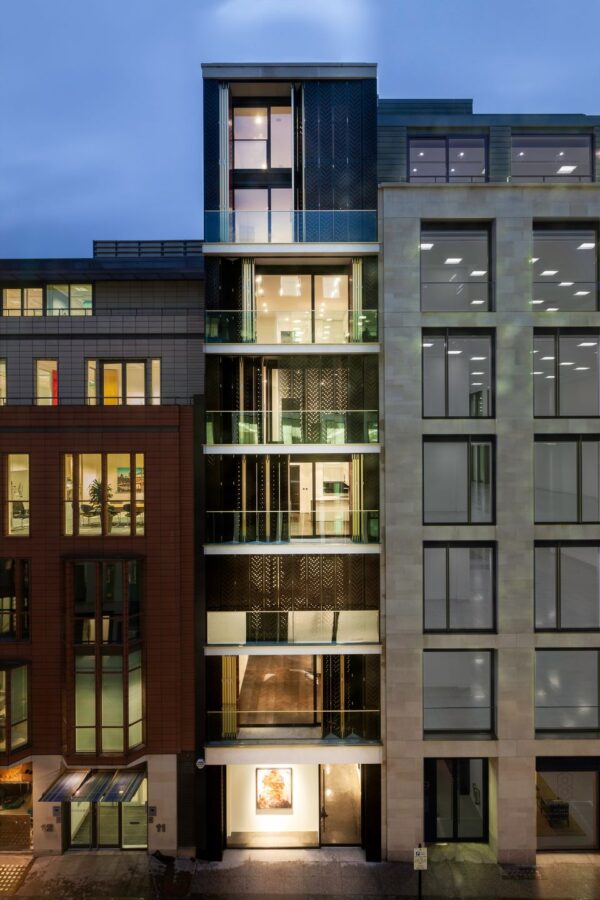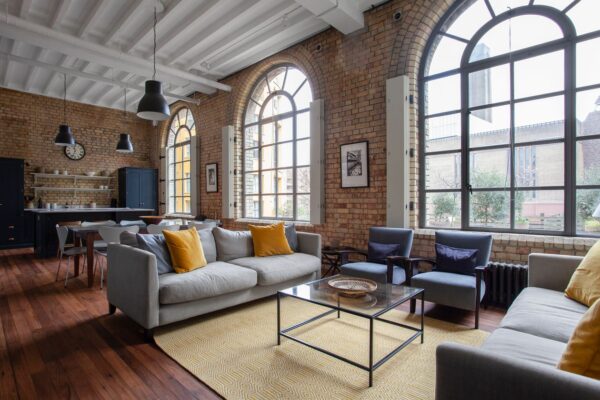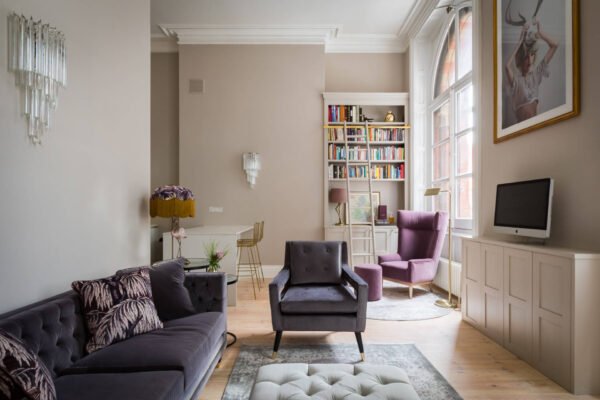
Noise pollution is a significant issue in London due to the city’s high population density and constant activity. From the sounds of traffic and construction to the hum of daily life, these noises can easily seep into homes, making peaceful living environments hard to maintain. This is particularly true for loft conversions, where sound often travels more freely due to their elevated position and potentially thinner walls compared to other parts of the house.
London’s noise levels can vary significantly depending on the neighbourhood. Properties near major roads, railway lines, or construction sites often face continuous disturbances, while those in quieter residential areas might still experience disruptions from neighbours. For anyone considering a London loft conversion, understanding the local noise environment is crucial to implementing appropriate soundproofing measures.

Taking the time to address noise pollution early in the planning stages of a loft conversion can help create a private, tranquil space amid the urban commotion. The investment in soundproofing not only improves comfort but also adds value to the property, making it a worthy consideration for anyone looking to convert their loft into a peaceful retreat in the heart of London.
Soundproofing Principles and Techniques
Soundproofing a loft conversion requires a thorough understanding of core principles like sound absorption, reflection, and insulation. When planning a loft conversion, it’s crucial to implement techniques that reduce both airborne and impact noise, given the potential disturbances from traffic, construction, and neighbouring properties.
Sound Absorption: This technique involves materials that absorb sound waves instead of reflecting them. Soft furnishings like rugs and curtains can help, but for structural changes, acoustic panels and mineral wool insulation are excellent options. Installing them between walls, ceilings, and floors can significantly dampen sound transmission.
Sound Reflection and Insulation: Reflecting or blocking sound waves often requires heavier barriers or materials with specific properties. Double or triple-glazing windows can be effective in minimising external noise infiltration. Meanwhile, installing dense materials like soundproof plasterboards or resilient channels within the walls can help prevent sound waves from passing through and disturbing the peace inside.
Impact Noise Reduction: Vibrations caused by footsteps or shifting furniture can transmit through the structure. Floating floors or resilient underlayments can create a gap between the surface and structure to minimise this impact.
When it comes to selecting the best flooring for soundproofing, it’s important to choose materials that are designed to absorb or block sound efficiently. For example, cork, rubber, and thick carpet can offer excellent sound absorption properties, making them ideal for areas where noise reduction is essential. These materials can be used in combination with other soundproofing techniques, such as floating floors or underlayments, to provide enhanced noise reduction. Whether you’re designing a home theater or creating a quieter living space, the right flooring choices are key to achieving optimal sound insulation.
For those looking to install effective flooring, this website – flooring experts have good flooring options tailored to meet specific needs. They offer a range of products, from specialized acoustic underlays to high-performance carpets, all designed to reduce noise and improve comfort. By consulting with flooring experts, you can ensure that the materials selected not only suit your aesthetic preferences but also provide the best possible soundproofing benefits for your space.
Combining these soundproofing techniques will greatly enhance your loft conversion, helping to ensure a quiet retreat despite London’s vibrant urban environment.

Choosing the Right Soundproofing Materials
Selecting the right soundproofing materials is crucial to creating a peaceful loft conversion. Various materials address different types of noise, and the choice will depend on your specific needs and budget. Here’s a closer look at some effective options:
Acoustic Panels: Designed to absorb sound waves and reduce echo, these panels prevent noise from bouncing around. They come in various shapes and sizes, making them versatile for both walls and ceilings.
Soundproof Plasterboard: Also known as acoustic plasterboard, this denser type of wallboard can effectively block noise transmission. Ideal for loft conversion walls, it adds an extra barrier against sound leakage.
Resilient Channels: Metal strips that separate the wall or ceiling surface from the building’s structure, resilient channels reduce vibration transmission. They work best when combined with other soundproofing materials to reduce both airborne and impact noise.
Mineral Wool Insulation: Mineral wool, like Rockwool or fibreglass, is an excellent insulating material that dampens sound. Placing it within the wall cavities or the loft floor can absorb a considerable amount of noise.
Gas-Filled Windows: These windows, often filled with inert gases like argon or krypton, create an additional buffer for noise reduction and heat insulation. The gas layer between panes minimises sound infiltration, making them an essential addition to loft conversions in high-traffic or noisy areas of London.
Understanding these materials’ benefits and combining them thoughtfully will ensure that your loft conversion remains a serene sanctuary amid London’s busy urban environment.
Soundproofing for Different Loft Conversion Spaces
Each area of a loft conversion presents unique challenges when it comes to soundproofing. By tailoring your approach to specific rooms, you can ensure that every part of the converted loft provides peace and quiet, even in the bustling city of London. Here’s how to address soundproofing for common loft conversion spaces:
Bedrooms: As spaces intended for rest and relaxation, loft conversion bedrooms require effective noise reduction. Focus on adding dense insulation in the walls and ceiling to prevent external noise from entering. Gas-filled windows and thick curtains can help block traffic noise or other disturbances. Acoustic doors and seals around the frame can also prevent noise from other areas of the house.
Home Offices: If your loft includes a home office, productivity depends on creating a quiet workspace. Consider installing acoustic panels on the walls or ceiling to reduce echo and block out distractions. Double-layered soundproof plasterboard and resilient channels are also beneficial to minimise vibrations.
Recreational Spaces: For entertainment areas like media rooms, soundproofing helps contain noise so as not to disturb the rest of the household or neighbours. Using acoustic plasterboard and mineral wool insulation in walls and floors will reduce sound transmission. Carpet or other soft flooring will absorb some impact noise, further improving the sound environment.
Bathrooms: In bathrooms, noise containment ensures privacy and reduces the transmission of running water sounds. Proper insulation in the walls and floors, combined with effective ventilation, will prevent noise from escaping and dampen the sound of plumbing.
Customising soundproofing strategies for each space in your loft conversion ensures that every room provides a quiet retreat, regardless of its purpose.
Working with Professionals and Complying with Regulations
When soundproofing a loft conversion in London, it’s crucial to work with professionals who understand the nuances of noise reduction and local building regulations. Here’s how collaborating with experts can streamline the process and ensure compliance:
Finding the Right Professionals: Look for architects, builders, or consultants who have experience with loft conversions and soundproofing in London. They can offer tailored recommendations based on the city’s unique noise challenges and guide you on the best materials and techniques to achieve your desired results.
Understanding Building Regulations: London loft conversions must adhere to specific building regulations, particularly around loft conversion insulation and fire safety. For instance, lofts must be structurally safe and include proper emergency exits. Your chosen professionals will ensure that all soundproofing measures meet these regulations while also advising on noise insulation standards for separating walls and floors.
Planning Permission: While most loft conversions fall under permitted development, some may require planning permission, especially in conservation areas. Professionals can help navigate the application process and ensure that your soundproofing strategies align with any required permissions.
Quality Assurance: Working with experienced professionals ensures quality workmanship, from selecting soundproofing materials to installation. They can conduct inspections and tests to guarantee that sound insulation is up to standard and provide aftercare advice to maintain the integrity of your soundproofing over time.
By enlisting the help of seasoned professionals and ensuring compliance with regulations, you can confidently transform your loft conversion into a tranquil haven in London, well-insulated from the city’s constant noise.
